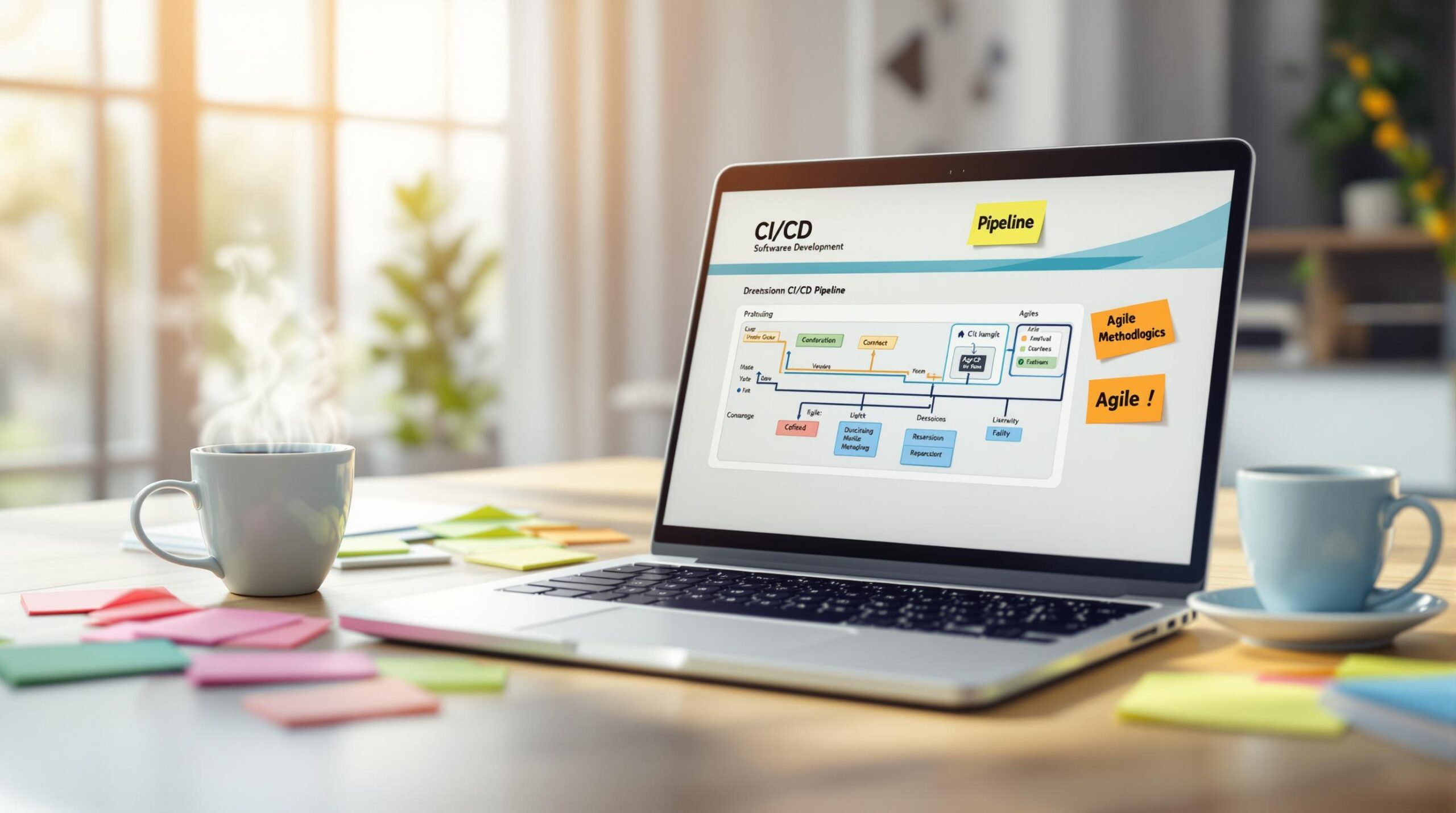Aptitude tests are critical for landing tech jobs at companies like Google and Microsoft. They assess skills in math, logical reasoning, and problem-solving under tight time limits. To succeed, you need solid strategies, including shortcuts, formulas, and effective time management. Here’s what you’ll learn in this guide:
- Key Areas Covered: Quantitative aptitude, logical reasoning, and technical problem-solving.
- Shortcuts: Quick methods for percentages, ratios, profit & loss, and number series.
- Essential Formulas: Geometry, algebra, and data interpretation formulas.
- Time Management: Prioritizing questions, dealing with tough problems, and staying calm under pressure.
- Preparation Tips: Best platforms for practice, creating a study schedule, and simulating test conditions.
Quick Tip: Start by mastering core concepts and practicing under timed conditions to improve speed and accuracy.
Aptitude Tests in Tech Hiring: An Overview
Tech companies are increasingly relying on aptitude tests to screen candidates. Research shows that these assessments can improve hiring decision accuracy by up to 24%. Knowing how these tests are structured allows candidates to focus on the skills and strategies that matter most.
Types of Aptitude Tests and Skills Evaluated
Aptitude tests in tech typically focus on three main areas:
| Competency Area | Key Skills | Application |
|---|---|---|
| Quantitative Analysis | Data interpretation, Math reasoning | Problem-solving, Algorithm efficiency |
| Logical Thinking | Pattern recognition, Critical reasoning | System design, Code architecture |
| Technical Communication | Documentation, Requirement analysis | Team collaboration, Code documentation |
These tests assess key abilities such as:
- Breaking down problems into manageable parts
- Managing time effectively under tight deadlines
- Making sound decisions with limited information
- Optimizing solutions while working within constraints
Impact on Tech Hiring
Deloitte reported a 60% improvement in hiring efficiency and stronger employee retention after introducing cognitive assessments. According to Indeed.com:
"Companies that incorporate technical assessments into their hiring processes can identify top talent and make well-educated hiring choices."
For full-stack developers, these tests are a strong indicator of their ability to juggle diverse tasks, from creating scalable solutions to troubleshooting across multiple platforms. A Cambridge study found that psychometric tests reduced promotion biases by 40% [1], highlighting their role in objective evaluations.
Shortcuts for Efficient Problem-Solving
In tech aptitude tests, speed and accuracy are key. Learning shortcuts can help you solve problems faster without compromising precision. Regular practice with these methods can make a noticeable difference.
Shortcuts for Percentage and Ratio Calculations
Quick percentage calculations often hinge on recognizing base numbers. For instance, finding 10% of 120 is as simple as moving the decimal one place left: 12. From there, you can build:
- 25%: Double 10% and add half of 10% (12 × 2 + 6 = 30)
- 50%: Divide the number by 2 (120 ÷ 2 = 60)
- 75%: Add 50% and 25% (60 + 30 = 90)
| Percentage | Shortcut Method | Example (Base: 120) |
|---|---|---|
| 25% | Double 10% + half of 10% | (12 × 2) + 6 = 30 |
| 50% | Divide by 2 | 120 ÷ 2 = 60 |
| 75% | Find 50% + 25% | 60 + 30 = 90 |
For ratios, simplify by dividing both sides by their greatest common divisor. For example, 12:18 simplifies to 2:3 when divided by 6.
Simplified Methods for Profit and Loss
Profit and loss calculations can be streamlined by focusing on the relationship between the cost price (CP) and selling price (SP). Use these formulas for quick results:
- Profit % = ((SP – CP) ÷ CP) × 100
- Loss % = ((CP – SP) ÷ CP) × 100
Example: If an item costs $100 and sells for $120, calculate:
((120 – 100) ÷ 100) × 100 = 20% profit
Strategies for Solving Number Series Quickly
Number series often follow patterns like arithmetic progression (adding/subtracting a constant), geometric progression (multiplying/dividing by a constant), or mixed operations. For instance, in the series 2, 4, 8, 16, the pattern is multiplying by 2.
Important Formulas for Aptitude Tests
Knowing the right formulas can save time and improve accuracy, giving you an advantage in competitive aptitude tests. Here’s a handy list of formulas, sorted by category, for quick reference.
Key Formulas in Geometry and Algebra
Some of the most commonly used formulas in geometry and algebra include:
| Shape | Area Formula | Perimeter/Surface Area |
|---|---|---|
| Circle | A = πr² | P = 2πr |
| Rectangle | A = length × width | P = 2(l + w) |
| Triangle | A = ½ × base × height | P = a + b + c |
| Sphere | V = 4/3πr³ | SA = 4πr² |
Algebra formulas you’ll frequently encounter:
- Quadratic formula: x = [-b ± √(b² – 4ac)] / 2a (used for solving ax² + bx + c = 0)
- Difference of squares: a² – b² = (a + b)(a – b)
- Square of a binomial: (a + b)² = a² + 2ab + b²
Formulas for Data Interpretation
When working with statistics and percentages, these formulas come in handy:
- Mean = Sum of values ÷ Number of values
- Median = Middle value in sorted data
- Mode = Most frequent value
- Range = Highest value – Lowest value
- Percentage Change = [(New – Old) / Old] × 100
- Percentage of Total = (Part Value / Total Value) × 100
Logical Reasoning Techniques and Formulas
Logical reasoning often requires specific strategies instead of strict formulas:
- Syllogisms: Use Venn diagrams to simplify relationships. For instance, if "All A are B" and "All B are C", then "All A are C."
- Series Patterns: Recognize common patterns like:
- Fibonacci sequence: 1, 1, 2, 3, 5, 8…
- Prime numbers: 2, 3, 5, 7, 11…
"Focusing on understanding the underlying concepts rather than just memorizing formulas is crucial. Practice with a variety of problems to build flexibility, and use shortcuts and approximations when appropriate." – From CAT exam preparation guidelines [3]
While learning these formulas is essential, managing your time well during the test is equally important to apply them effectively under pressure.
sbb-itb-f454395
Time Management Tips for Aptitude Tests
Managing your time well can make all the difference in aptitude tests. While knowing shortcuts and formulas is helpful, timing ensures you can use those tools effectively under pressure.
Prioritizing Questions That Matter Most
Start by scanning the test to identify questions that offer the most points with the least effort. Here’s a simple strategy:
- Start with easy questions: These are quick wins that boost your confidence and rack up points early.
- Move to medium-difficulty questions: Tackle these while your mind is still sharp.
- Save the toughest problems for last: This way, you don’t lose out on easier points by getting stuck.
If your test has varying point values, allocate your time accordingly. For instance, in a 60-minute test with 30 questions, spend more time on high-value items while ensuring you attempt as many questions as possible.
Dealing with Tough Questions
When you hit a challenging question, don’t panic. Use a step-by-step approach to stay efficient:
| Time Spent | What to Do |
|---|---|
| First 30 seconds | Quickly decide if you can solve it. |
| Next 60 seconds | Use elimination to narrow options. If still unsure, make an educated guess or mark it for review. |
This method keeps you moving without wasting precious minutes.
Staying Calm Under Pressure
Feeling anxious? Try these tips to stay focused:
- Practice deep breathing before starting each section.
- Use the 2-minute rule: If a question feels overwhelming, move on and come back later.
- Keep in mind: One tough question won’t ruin your score.
"Consistent practice under timed conditions helps in developing a rhythm and in managing time more efficiently. This approach allows candidates to identify their weaknesses and work on them, which can significantly impact overall test performance."[2]
Want to feel more prepared? Practice in an environment that mimics the actual test. Set a timer, work in a quiet space, and build the mental stamina needed to stay sharp during the test.
With these strategies in place, you’re ready to tackle the next step: creating a solid preparation plan to boost your readiness.
Preparation Strategies for Aptitude Tests
Getting ready for aptitude tests requires a well-planned approach that combines reliable resources, focused practice, and realistic test simulations. Here’s how you can set yourself up for success.
Recommended Resources for Practice
Here are some popular platforms you can use to prepare:
| Platform | Key Features | Best For |
|---|---|---|
| KodNest | AI-driven mentorship, mock tests, detailed solutions | Full-stack developers |
| Scaler | Comprehensive topic coverage, performance analytics | Technical aptitude |
| Udemy | Self-paced courses, practice questions | Beginners |
| Indiabix | MCQ bank, detailed explanations | Quantitative aptitude |
Choose one platform to focus on instead of juggling multiple options. Placement statistics show that around 50% of candidates are eliminated during aptitude screenings [2]. Platforms like KodNest and Scaler allow you to concentrate on key topics and monitor your progress.
Creating a Study Schedule
Start by dedicating the first two weeks to mastering core topics such as percentages and logical reasoning with daily focused sessions. In the final two weeks, shift your focus to taking full-length practice tests, reviewing topics, and analyzing your mistakes. Work on topics in order of difficulty to get the most out of your preparation.
Simulating Test Conditions
Practice in an environment that mimics real test conditions. Choose a quiet space with good lighting and comfortable seating, and use the same device you’ll use on test day. Stick to strict time limits and avoid breaks unless they’re part of the test. Practicing this way helps you pinpoint weak areas and builds the confidence you need to perform well.
Conclusion: Effective Preparation for Aptitude Tests
Preparing well for aptitude tests isn’t just about studying – it’s about executing a smart plan during the test. Success hinges on a combination of focus, endurance, and consistent practice. Research shows that candidates who dedicate 4-6 weeks to preparation are 40% more likely to succeed compared to those who cram at the last minute.
Key methods like learning shortcuts, mastering formulas, managing time effectively, and practicing regularly can make a huge difference. Simulating test conditions is also a game-changer – it helps improve performance, reduce stress, and save precious minutes during the actual test.
Here are some strategies to enhance your preparation:
- Understand Core Concepts: Spend time mastering essential formulas and shortcuts, especially for topics like percentages and logical reasoning.
- Practice in Realistic Settings: Mimic test conditions to build focus and mental stamina, which helps ease anxiety.
- Monitor Your Progress: Use platforms like KodNest or Scaler to identify weak spots and track improvement over time.
Employers often use aptitude scores as part of a larger evaluation process. As Aptitude-test.com wisely advises:
"Regular practice really pays off, so be sure to create a practice schedule, then make a promise to yourself to stick to it."
FAQs
How to get good at logical reasoning tests?
Logical reasoning plays a big role in tech aptitude tests, requiring sharp thinking and quick problem-solving. As Aptitude-test.com states:
"The more able you are to think logically the easier you will find these test types."
Here are some practical ways to sharpen your logical reasoning skills:
-
Practice with Brain Teasers
Activities like Sudoku, crosswords, and logic puzzles help train your brain to spot patterns, think systematically, and solve problems efficiently. -
Simulate Test Conditions
Work on timed practice tests to get used to the pressure of real exams. Start with easier questions, then gradually tackle harder ones as your confidence grows. -
Mix Up Your Exercises
Dedicate time daily to a variety of exercises. For example, spend 20–30 minutes on Sudoku, 15–20 minutes on crosswords, and 25–30 minutes on logic puzzles. This variety helps improve both verbal and deductive reasoning skills.





